The untold story of the Chinese Americans who helped create Yosemite
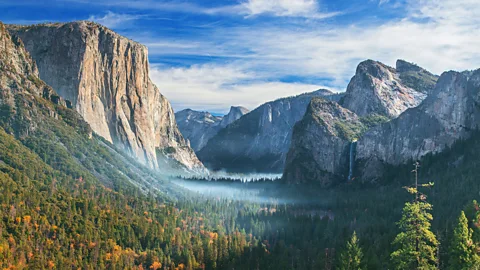 Getty Images
Getty ImagesFrom the park's mountain peaks to its winding roads to its wood-panelled buildings, Chinese American history is everywhere in Yosemite – if you know where to look.
Hidden beyond the iconic Half Dome monolith, about a 90-minute drive north-east from Yosemite Valley, a quiet section of Yosemite National Park emerges. Here in Tuolumne Meadows, less-gazed-upon domes and peaks are served with a refreshing dose of serenity in the subalpine terrain. Lurking in the background, just out of view, is Sing Peak, rising 10,552ft from the park's south-eastern corner.
"The way the topography is with certain ridge lines and perspectives, [Sing Peak] just gets hidden. But it's on our park map – the one that millions of people receive," said Yosemite park ranger Yenyen Chan, explaining that only a few dozen of the hundreds of peaks in Yosemite are listed on the map.
It's somewhat symbolic that a massive summit named after Chinese American chef Tie Sing in 1899 has remained largely unrecognised in Yosemite for more than a century.
In fact, Chinese immigrants have long been part of Yosemite's story, from building large parts of the park's early infrastructure to running the kitchen and laundry services at the park's 1856-built Victorian-style Wawona Hotel. Yet, their contributions have remained ignored.
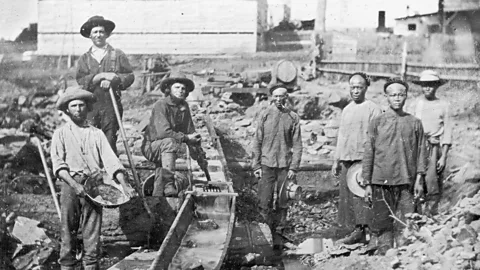 Alamy
AlamyYosemite's Chinese American history has likely been buried because of the nation's long history of anti-Asian sentiment and discrimination. The surge of Chinese who immigrated to California during the Gold Rush in the late 1840s were immediately slapped with a foreign miners tax in 1850 and a hefty $20 a month "non-citizens" fee. That forced many to find work in other industries, like hotels and railroads. But then came the Chinese Exclusion Act of 1882, banning Chinese labourers from entering the country, a policy that remained in place until 1943.
Chan, who has been a US Park Ranger since 2003, got her first hint of Yosemite's Chinese American history in 1993 as a park intern, when her supervisor told her that the Chinese built the Tioga Road, which climbs above the valley and crosses the park from east to west back in 1882-83.
"I thought, 'Why had I never heard of the Chinese being anywhere in the area, let alone this incredibly beautiful wilderness?'" she said. "I had no context and felt like very few people knew about it. When I tried looking into it, I could only find very little information."
So, during her downtime, she started researching on her own, scouring libraries throughout California for documents, photographs and any hints of early Chinese contributions to Yosemite. She found that a 56-mile stretch of the Great Sierra Wagon Road, which has mostly become today's Tioga Road, was built by 250 Chinese American and 90 white labourers in a mere 130 days, according to one report.
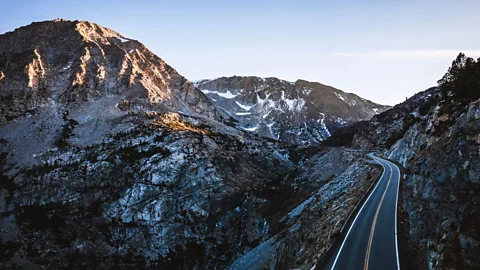 Alamy
AlamyEven prior to that, Wawona Hotel owner Henry Washburn had hired a crew of mostly Chinese immigrants, who constructed the Wawona Road around 1874. Working through harsh winter conditions and using handpicks, shovels, axes and blasting powder, the Chinese workers managed to complete the 23-mile road in 18 weeks. Visitors entering Yosemite through the south entrance on Highway 41 today still pass over parts of the road originally built by those workers.
Washburn also staffed his kitchen with Chinese immigrants, led by head chef Ah You, whom he hired in 1886. Though he ran the kitchen until 1910 and worked in the hotel a total of 47 years until 1933, he and the other Chinese workers were often kept out of sight.
Mark Twain even immortalised the diligence of California's Chinese labourers in his 1872 travel book Roughing It, writing: "They are as industrious as the day is long… and a lazy one does not exist."
Eventually, a mentor of Chan's encouraged her to put together a seminar and all-day hike about the park's Chinese American history. Among her findings was the background of the peak's namesake Sing. But due to a lack of firsthand records and the unreliability of certain historical documents that were likely altered to protect Chinese workers against anti-Asian policies, Chan's search proved challenging. Case in point: according to records, Sing was born in Nevada to Chinese immigrants. But Chan says Sing also had travel documents with another Chinese name and a wife and at least one child in Hong Kong. "There are still many unknowns," she said.
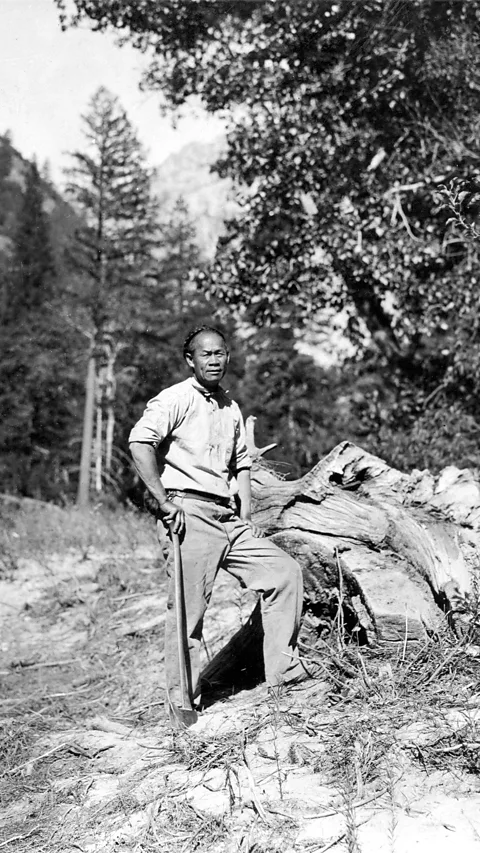 US Geological Survey
US Geological SurveyWhat is certain is that Sing had a way with people and a knack for whipping up gourmet meals in the most rustic of settings. Assistant Secretary of Interior Stephen Mather had heard of Sing's skills and hired him in 1915 on a pivotal two-week wilderness excursion with a mix of influential politicians, newspaper editors, businessmen and lawyers through the Sierras, which became known as the Mather Mountain Party. The group set out from Visalia, California, to Yosemite to experience the wilderness firsthand. By immersing these luminaries in the beauty of the US' great outdoors, Mather hoped to gain the crucial support he needed to establish the US National Park Service.
Sing put all the finest touches on al fresco dining in the woods: white tablecloths with fine china were set on long tables as the guests sat on logs and makeshift chairs, devouring hearty meals of trout and venison and even fresh sourdough bread and apple pie baked in a portable oven. The NPS was formally established the following year.
More like this:
• How the Transcontinental railroad forever changed the US
As Chan started uncovering and sharing more Chinese stories about Yosemite, she was connected with Jack Shu, the then-California State Park Superintendent, and the Chinese Historical Society of Southern California (CHSSC). Together, they launched the Yosemite Sing Peak Pilgrimage in 2012.
Each year, the group of CHSSC members, avid hikers and history enthusiasts retraces the park's Chinese American pathways, such as walking down the Chinese-built roads and visiting sites where Chinese labourers worked, "trying to unlock these little historic mysteries", said longtime CHSSC member and former president Eugene Moy.
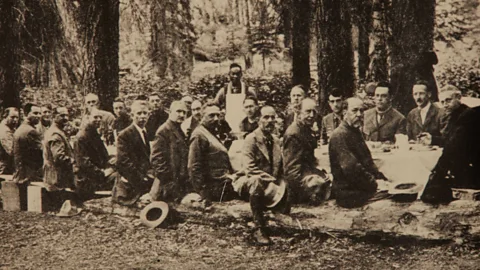 GH Grosvenor
GH Grosvenor"A lot of us who have [done CHSSC hikes] tend not to be recent immigrants – our families have been here a long time," Moy explained. "We have this gap in our past, so we want to walk in the footsteps that our ancestral family members walked to honour and recognise this gap.”
Hike Sing Peak
The Yosemite Sing Peak Pilgrimage is held 26-28 July 2024, and the backpacking trek to the top of Sing Peak takes place a few days later on 29-30 July.
Now heading into its 12th year (the event was held virtually in 2020), the event sees about 50 to 70 people come together for a weekend of activities, including history talks and a hike along the original Tioga Road, before about 20 people stay on a few more days to summit Sing Peak. Moy says the hike "satisfies both the historical curiosity and the physical challenge", which is "a metaphor for what some of our early forebears did: carving out a road in the middle of winter".
Another pilgrimage highlight: potluck dinners. "The fact that Tie Sing could cook these magnificent meals, we had to do something with cooking and [sharing] in food," he added, explaining they often include camp cooking demonstrations.
During one of the pilgrimages in 2016 or 2017, the group visited a ramshackle building by the Wawona Hotel that had been its laundry building. Built in 1917 to replace a former laundry business, it fell into disuse and was converted to a carriage shop in the 1950s before becoming a glorified storage unit.
 Alamy
AlamyThe group had the idea to restore the building and use it as an exhibition space to share the park's untold Chinese American history with visitors. The National Park Service supported the idea and applied for a grant through the Yosemite Conservancy. When Sandra and Franklin Yee learned about the project, they jumped at the opportunity to take part.
Sandra's father, a Chinese American who came to the US when he was 14, had first taken his family on holiday to Yosemite in the late 1940s, renting a cabin near Wawona. Completely "enchanted with the magnificence of Yosemite and Wawona", Sandra remembers that her father said "he could spend every summer of his life there. And he did."
He bought a cabin in 1953 in Wawona, which has a mix of public and privately owned land, and now four generations of the family have enjoyed their summer getaways there. The Yees had been searching for a way to honour her parents' love for Yosemite, and they decided to fund the restoration of the so-called Chinese Laundry Building.
Located right next to the Wawona Hotel, outside of the semicircle of the other historical buildings honouring Yosemite's diverse history – including that of the Buffalo Soldiers – the new landmark opened in October 2021. Visitors can now step inside and learn about the park's Chinese American influences – a true reflection of Chan's decades of research.
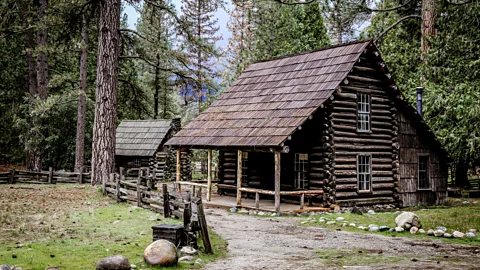 Alamy
Alamy"I felt really strongly about these stories being told, but never imagined [they would be] a permanent exhibit Yosemite now maintains," Chan said. "It's very gratifying."
Still, Chan thinks that there's still so much more Chinese history that she hopes to reveal, and explains that these influences aren't limited to Yosemite, but were also essential to the early stages of national parks from Sequoia to Yellowstone, and much of the infrastructure of the American West.
"This is just the tip of the iceberg," she said. "Even though there's just little pieces of information, once you start looking at the connections, you might find that there's an important story that hasn't been told – and it only helps make us appreciate human history more."
--
If you liked this story, sign up for The Essential List newsletter – a handpicked selection of features, videos and can't-miss news, delivered to your inbox twice a week.
